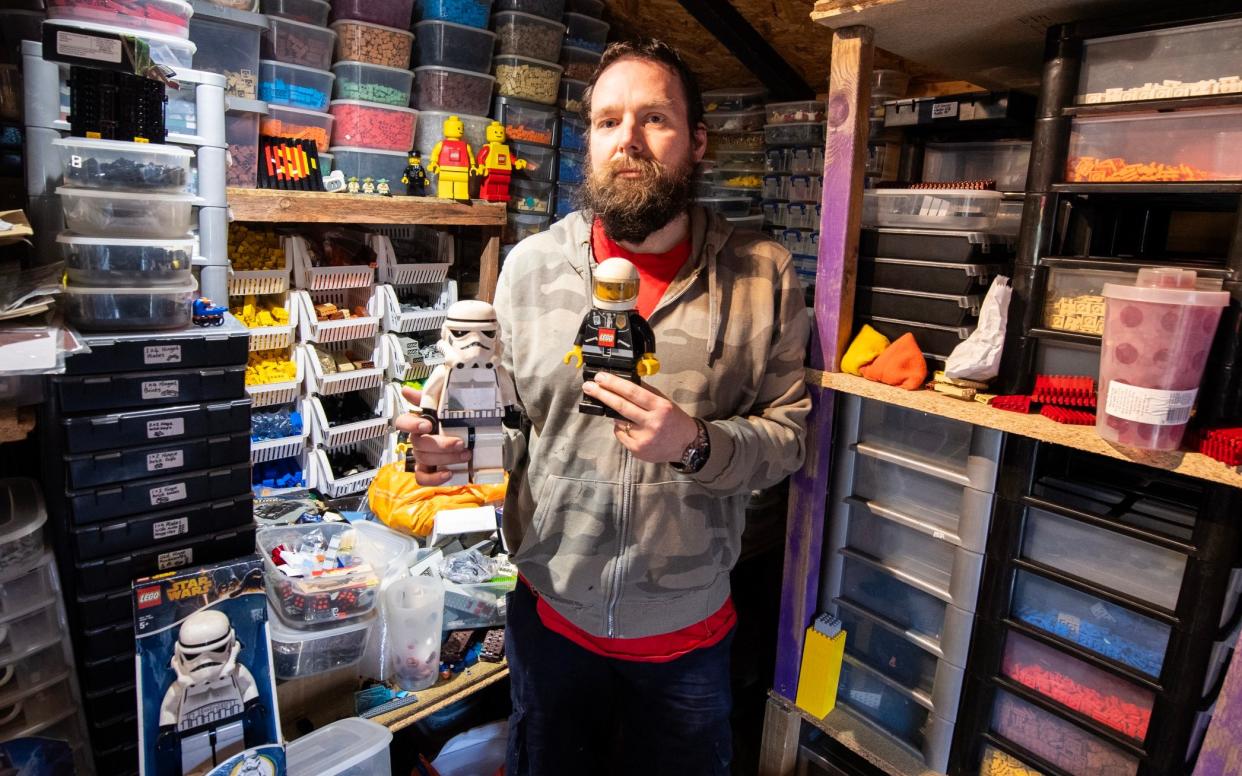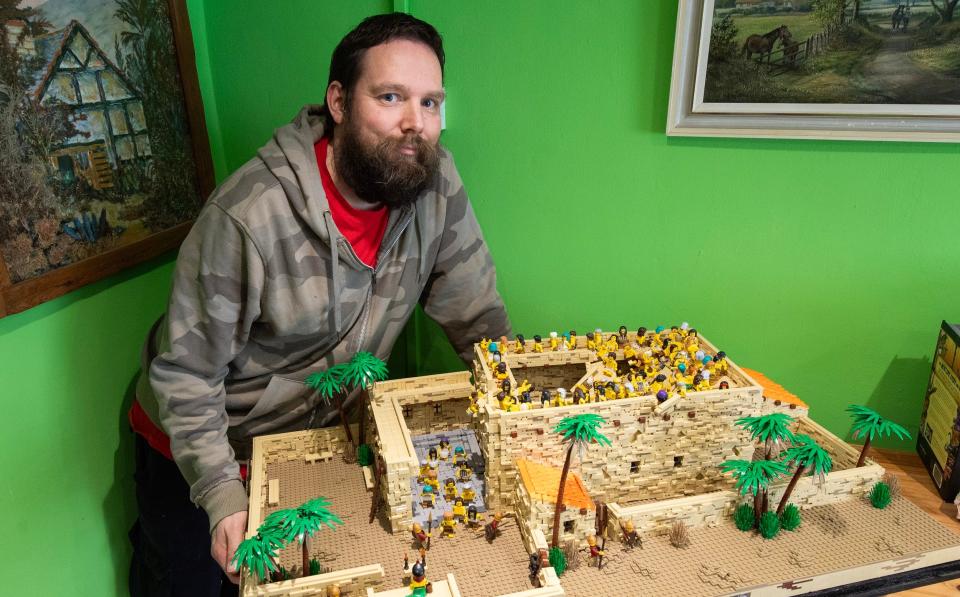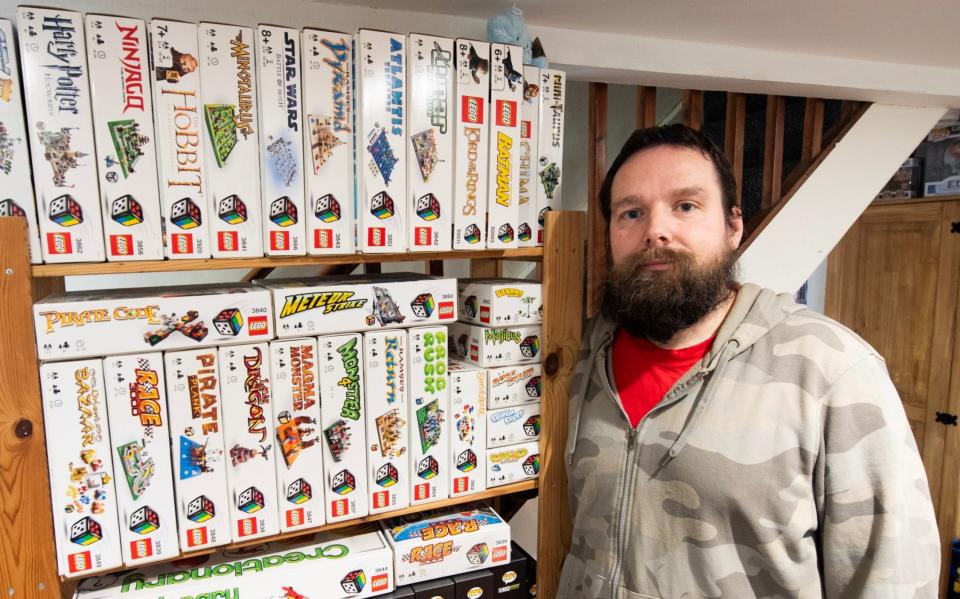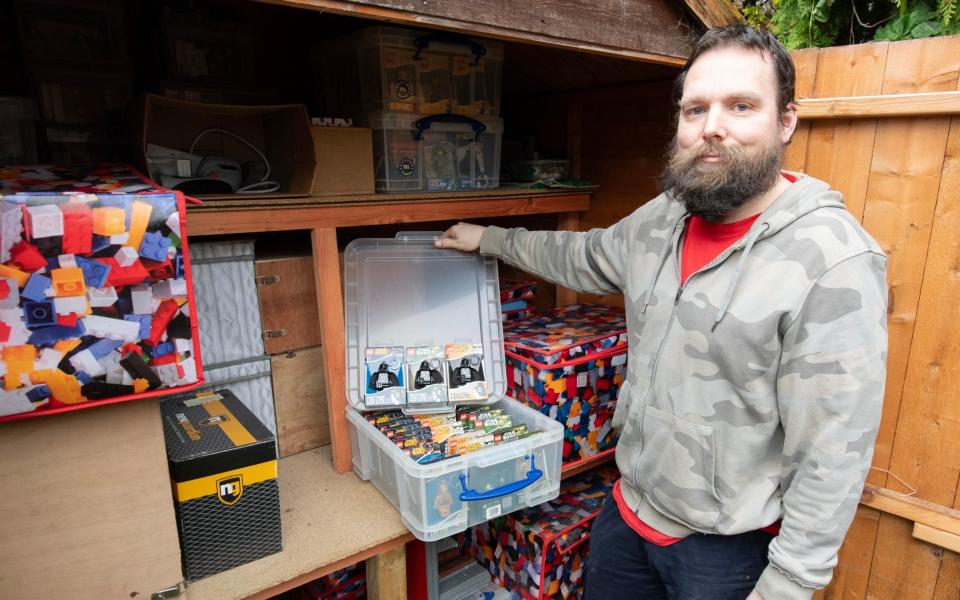‘I’ve spent hundreds of thousands on Lego – but I’m not selling any of it’

Hidden under thousands of beds across Britain or collecting dust in the loft, will be an assortment of long-forgotten Lego.
But one attic is different. In a house on the outskirts of a market town in Devon, lies close to 1,000 sealed Lego sets in mint condition.
Its owner, Simon Pickard, has no intention of opening them, let alone playing with them. The 44-year-old says he has spent “hundreds of thousands over the last 10 years”, collecting around two million pieces – and has no plans of stopping anytime soon, or selling up.
Simon’s love of Lego started from an early age. “My dad was in the Army so he used to bring us back Lego sets for me and my brother,” he says. “He’d be away training for six months with the Royal Signals and he’d always come back with some Lego.
“But I’m quite rare in the adult world, I never had a dark age – a period where you stopped playing with Lego and took it up again in later life – I’ve always had Lego.”
Pickard puts this down to the brand growing alongside him. Lego began releasing more complex sets throughout the 1990s to appeal to an older audience and, while he was at university, it launched its most successful franchise to date, Lego Star Wars.
“They released things at the right time for me to keep catching my interest,” he says. “There were quite a lot of things which appealed to me. There was the creative side, and it was also the small world side and the historical side, and the fact you could buy sets from the past.”

But it was the creative possibilities that really hooked Pickard. While each individual set gives users a step-by-step guide on how to build a specific model, all Lego pieces are designed to fit together, providing builders with never-ending combinations for designing their own unique models.
Having kept all his childhood Lego, bought out his brother’s collection and also been gifted his parents’ Lego, Pickard’s designs became more intricate and complex.
“I didn’t want to just build cars or build birds, which people do to a very good standard,” he says. “I like to challenge myself to build things which are different the whole time.”
One of those builds involved recreating the Battle of Thermopylae, an ancient Greek battle between the Spartans and Persians. However, as the bounds of his imagination were pushed, he came up against two major obstacles: the increasing space he needed and the rising costs.
In the case of the Battle of Thermopylae, Pickard built a five-foot long, three-foot high and two-and-a-half-foot deep model which cost him £2,500.
Pickard, who uploaded his creations online, was growing his reputation as a builder. He worked with DK Books, the publisher for official Lego books, building models for publication. He says: “It’s not a lot of money but it’s certainly more than nothing and I’m doing something I love.” He made 60 models for around £40 to £80 each.
He has also worked for fan magazine, Blocks, for the past nine years. “I take photographs of things I build and show how they are done. For example, I did one on doors and I showed five different ways you can approach making a door, so the emphasis is on developing the ideas rather than just saying ‘copy this’…it’s trying to show them the different ways you can approach it.”

Pickard now earns up to £5,000 each year from his published work in print, but adds this is considerably less than what he was earning prior to the pandemic when companies would approach him to build Lego models.
“I don’t get so much commission work now. I used to make things for businesses such as creating their logo out of Lego. It was almost a living before lockdown but people aren’t so interested in bespoke models at the moment. With the financial pressures, artistic type things go out of the window.”
His collection has swelled to the point that he now has a working stock of “about two million pieces” which are stored in a 12-foot by 18-foot shed built by his father. This is one of five sheds his dad has built to store his models.
Pickard can’t bring himself to part with any of his collection. “I know a lot of collectors will sell something and move on with their collection but with Lego, because the pieces never stop interacting with each other, you don’t generally want to sell what you’ve got because you’ll never know when you might need those sourced parts to help.”
The other reason Pickard feels no reason to sell is because of its consistently strong value. A study by a Russian university in 2021 found that second-hand Lego rose in value by an average of 11pc annually, producing a better return than gold.
Pickard laughs off this comparison. Achieving this 11pc increase would be heavily reliant on buying the right sets, he adds, citing Lego Star Wars as the most consistent category for quick turnover.
Such price rises would value his collection in the hundreds of thousands, giving him a nest egg that is rising in value faster than most people’s pensions.
“It’s difficult to know the true value of what we’ve spent, certainly hundreds of thousands [of pounds] over the last 10 years or so but it doesn’t really lose its value. If I wanted to, I could sell it all on and there’s a very high chance I’d make money out of it.”

Lego’s popularity shows no sign of waning, and it has never been easier to buy and sell second-hand sets. The Lego Group took over resale platform Bricklink in 2019 so that it now has control of the first and second-hand markets. Bricklink has 1.6 million registered users with more than 18,000 individuals selling complete sets and individual parts on the site.
It means within a few clicks, anyone can see the value of their own collection or choose to sell what they have.
And according to Pickard, there will always be a buyer for your Lego parts. “I used to have people come up to me and say ‘Oh you like Lego, here’s a bin bag full of Lego’, whereas now I’ll have people come up to me and say ‘Oh you like Lego, how much is it worth?’.”
If you are tempted to tackle the pile of Lego in your loft and see what the value is, Pickard recommends focusing on minifigures for the best returns, “particularly if you’ve opened it up”.
He adds: “Star Wars sets you can often make more money selling the figures off individually rather than selling the opened set.” Some minifigures regularly go for hundreds of pounds, with the rarest being worth thousands.
Pickard concedes that while Lego collecting is expensive, he has no regrets. The father of five gave up his job as a nursery manager to spend more time looking after his children, who have complex medical needs.
“It’s a balancing act; we aren’t going to earn as much but I need to be at home to look after them, and you just keep an eye on the income as you go along,” he says.
Ultimately, the value of the collection is secondary to Pickard’s love of Lego. Although he knows one day his collection will provide a windfall for his sons, for now, he is perfectly happy to stand in his attic and smile at all of his Lego.
Recommended
The retro games consoles that have soared in value

